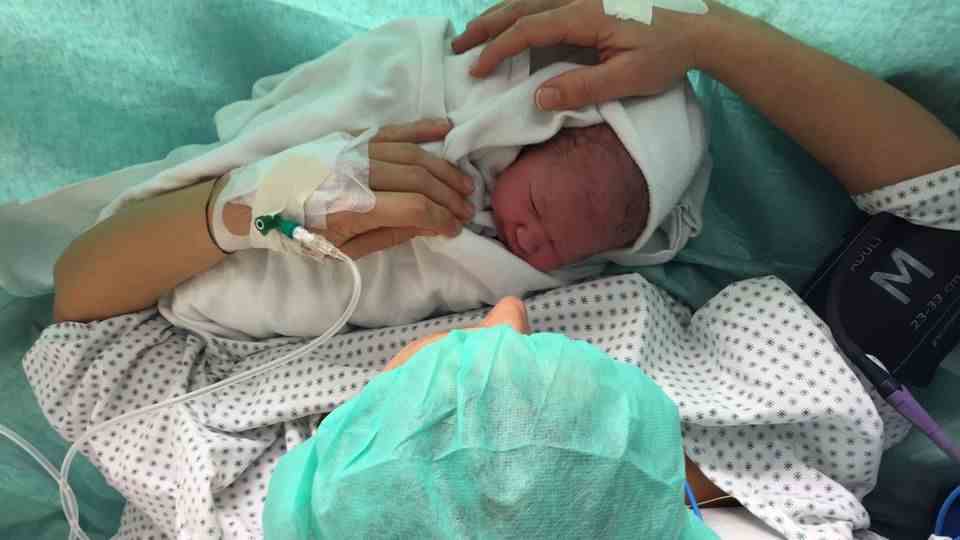births
Almost every third child in Germany is born by caesarean section
759,000 children will see the light of day in hospitals in 2020. Almost every third baby was delivered by cesarean section.
© Kieferpix/Getty Images
Fewer and fewer hospitals are offering childbirth in Germany. And the number of natural births is also falling. In 2020, 29.7 percent of women in Germany gave birth by caesarean section.
Almost every third birth in a hospital in 2020 was by Caesarean section. Overall, 29.7 percent or 220,700 women gave birth this way, like that Federal Statistical Office reported. Compared to 29.6 percent in 2019, the caesarean section rate has remained almost the same, but the proportion of surgical interventions has almost doubled over the past 30 years.
In 1991, only 15.3 percent of women had given birth by caesarean section. In addition to the caesarean section, there are other, albeit rarely used, methods of obstetrics: According to the statisticians, a suction cup was used in six percent of deliveries in 2020, and forceps in 0.4 percent.
Caesarean section – regional differences
There are major regional differences in Germany when it comes to caesarean sections. At 33.3 percent, the proportion of births that took place in this way was highest in Schleswig-Holstein. Saxony-Anhalt followed with a caesarean section rate of a good 32.3 percent. Berlin, on the other hand, had the lowest share at 25.6 percent, followed by Saxony at 26.6 percent.
The Organization for Economic Co-operation and Development (OECD) provides comparable data at international level. The data depict caesarean section rates for 26 states through 2019. In 2019, there were 54 caesarean sections for every 100 live births in Turkey, 39 in Poland and 38 in Hungary. With 30 caesarean sections per 100 live births, Germany is in the top third of the 26 OECD countries.
The number was comparatively low in Israel, at 15, and Norway and Iceland, each at 16. With 30 caesarean sections per 100 live births, Germany was in the top third of the 26 OECD countries.

Fewer and fewer hospitals are offering childbirth
In Germany, around 759,000 children, including twins and multiple births, were born in hospital in 2020 – 0.5 percent or 4035 fewer than in 2019. The proportion of children born alive was 99.6 percent.
According to the statisticians, fewer and fewer hospitals in Germany offer obstetrics at all. In 2020, only 32.7 percent of the 1,903 hospitals performed deliveries, compared to 49.2 percent in 1991. At that time there were a total of 2411 hospitals.
Midwives and maternity nurses play an important role in childbirth and in supporting women during and after pregnancy. In 2020, 11,535 midwives and maternity nurses provided obstetrics in hospitals, which was 102 or 0.9 percent more than in the previous year. Of these, 88 percent were permanent employees, twelve percent were so-called staff. The information on hospital births, midwives and maternity nurses in the hospitals is said to come from hospital statistics.


